Ep74 Brice Lefaux on primate conservation, research and his book Sauvons les primates
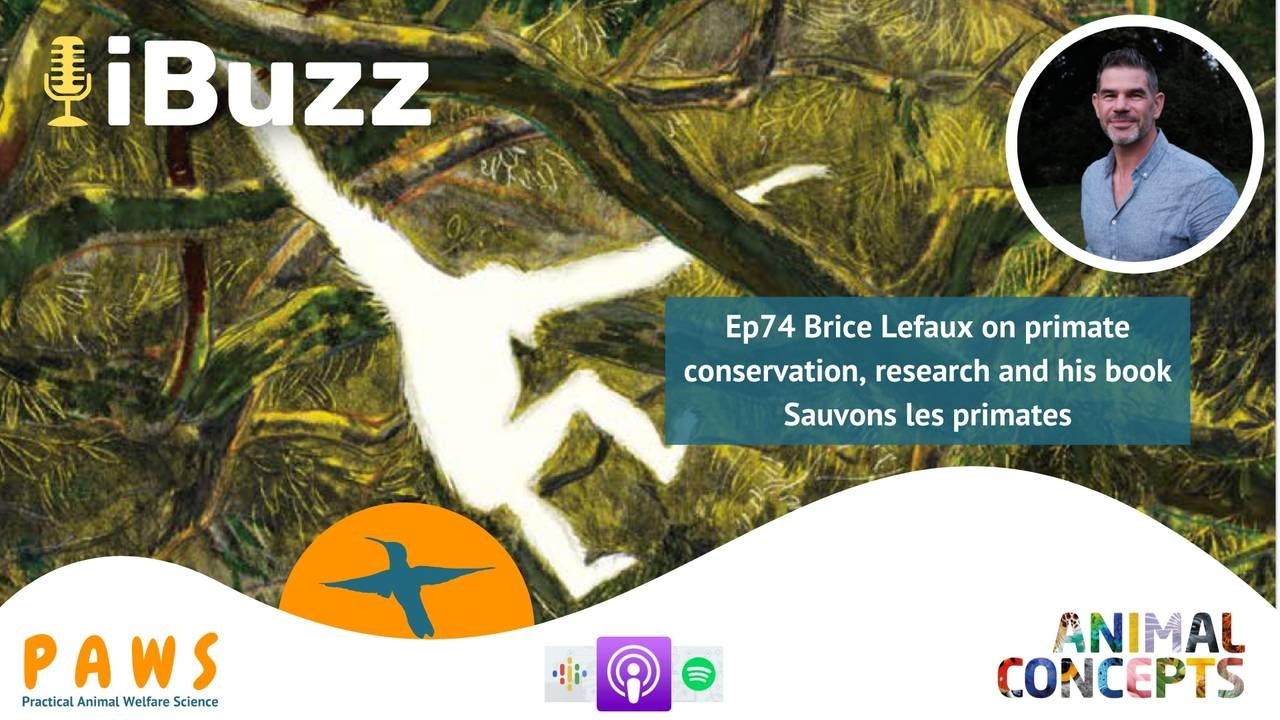
Let’s welcome Dr Brice Lefaux for today’s podcast as he takes us around the world to meet with the most endangered species of primates on earth.
It all started with Lily, the family dog. Growing up together, and learning to live with each other was probably the trigger to a life dedicated to animal welfare and conservation. One career option would be becoming a vet, although it wouldn’t be a match to his determination to make a difference.
Not realising at first how zoos could have an impact, Brice still decided to take a position as a Vet and Assistant manager at Bioparc de Doué la Fontaine. After a year, he experienced his first fieldwork in South America with Spider monkeys, a species of which he was studbook keeper back in Europe. There he realised that zoos were undeniable for the sustainability of field research and in-situ conservation actions. He felt a true connection to the wild and his long-standing passion for primates got even stronger.
For 21 years now, he has been...
Environmental enrichment as the sprinkles on top

What do we mean by environmental enrichment? As with anything, it is always good and helpful to understand where things came from. Environmental enrichment was born from something that the words reflect: enriching the environment.
Not long ago, and even today, animals in all kinds of systems can find themselves in environments that are not enriching, which are lacking in stimuli, in opportunities, complexity, and therefore a lack of choices and control and ability to exercise one's agency.
Some of these areas are still very much lacking, think for example of the back of house areas animals can spend many hours in. Whether in zoos, aquariums, research laboratories, with farm animals, or animals in shelters and at home, we came to the realisation that we need to enrich the environment by adding structures (flexible, fixed, soft, hard, etc.), vegetations, substrates, considering their social needs, hiding places, places as viewpoints, shade, or spaces large enough to rest, play or sleep ...
Podcast Ep73 Magnus Wahlberg on bioacoustics, underwater noise and the interplay of ex situ and in situ animal conservation studies
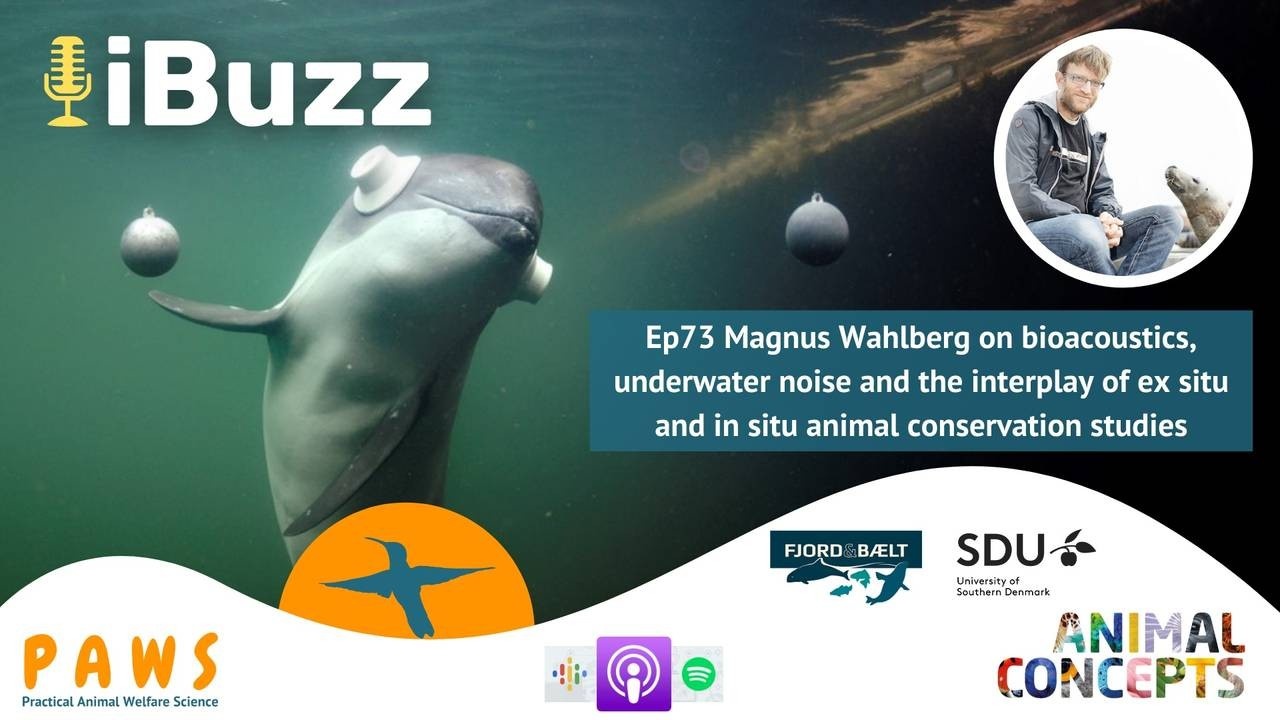
Magnus Wahlberg started out as a physicist and mathematician, even though he was more interested in biology. The thought of experimenting with laboratory animals put him off, and he felt field biology may not be his cup of tea.
Ironically, his voluntary work on marine animal sounds drowned him in fieldwork. He credits his mentors for their stimulating curiosity-driven approach. He had a long emotional journey of self-realisation that studying animals in captivity helps us know more about wild animals and vice versa.
Listen as Magnus tells us about his interesting work on the bioacoustics of marine animals. With many exciting examples, he explains his focus on how animals hear. He explains how captive animals help us test techniques before running field testing on wild animals.
“Would you rather be deaf or blind?” asks Magnus as he explains with relatable analogies. When vision underwater is limited, one has to rely on hearing. He shares how water is a good conductor of sound, making...
Ep72 Kirstin Anderson Hansen on positive reinforcement training for positive animal welfare and conservation
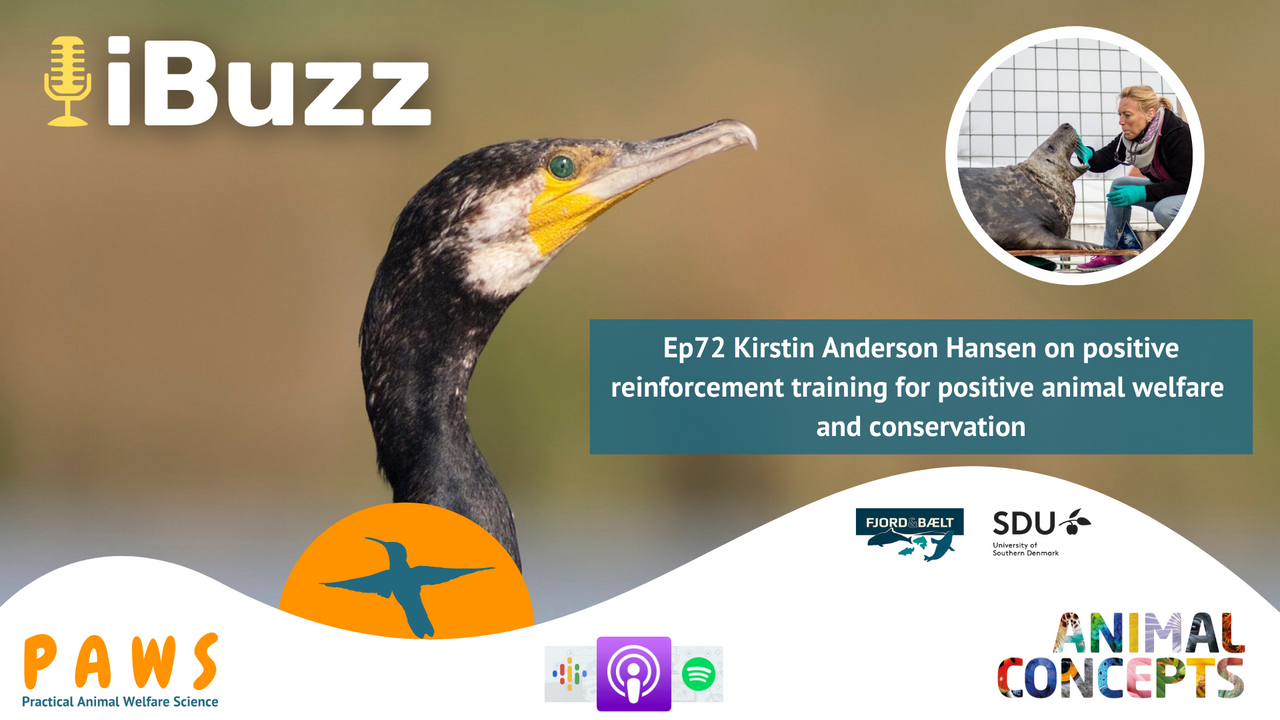
Let’s welcome Dr. Kirstin Anderson Hansen for today’s podcast as she takes us on an exciting life journey through her experiences in animal training and bioacoustics of marine animals.
As a 13-year-old, Kirsten encountered her first surreal sighting of swimming killer whales whilst journeying on a bike on the San Juan islands off the coast of Washington State. This set the course as a marine biologist for this Colorado girl, starting from high school to post-doctorate.
Kirstin shares how operant conditioning for communicating with animals is all about, “Teaching animals to be comfortable in the world that they live in!” She explains that training animals in co-operating for their own wellbeing is a priority. It helps showcase the animal’s natural behaviours and individual personalities for public education, she believes.
Although her MSc was related to bioacoustics of mimicry in beluga whales, her PhD involved training a great cormorant named Loke, taking part in an underwater behav...
Ep71 Hal Herzog on biological psychology and cultural influences on human-animal interactions
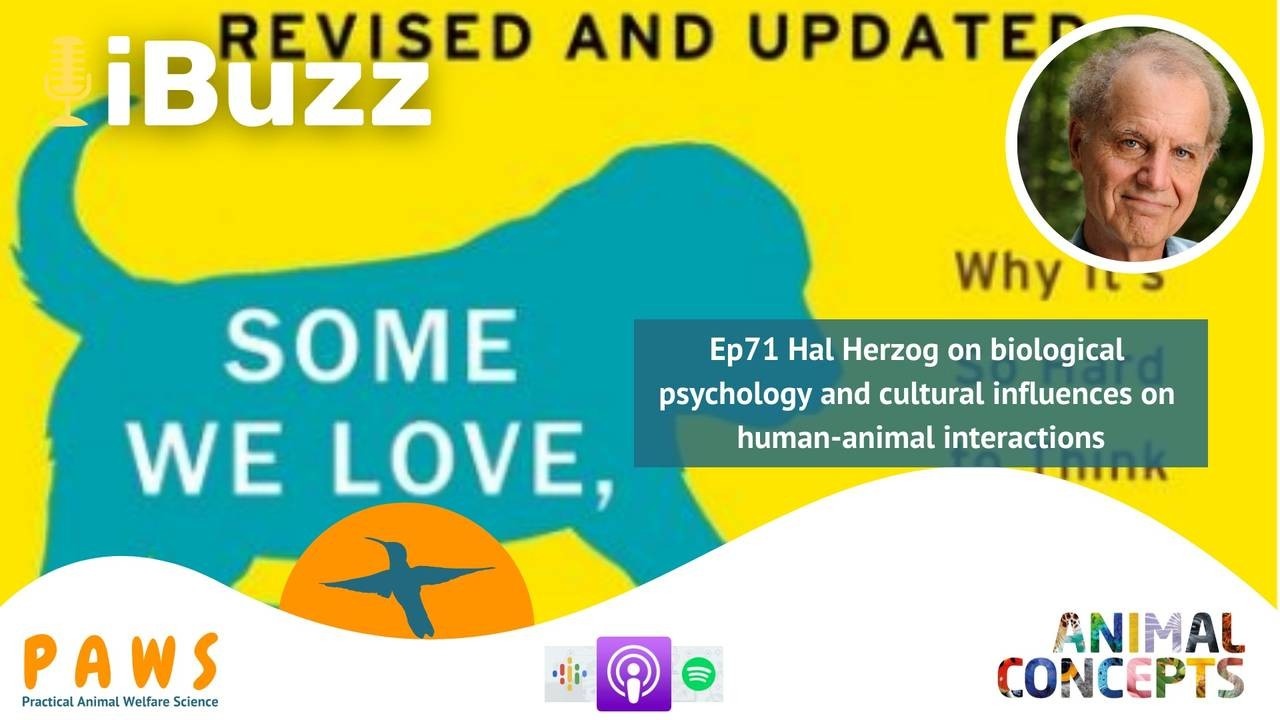
Hal Herzog is a professor of psychology at Western Carolina University, whose research entails the complex psychology of human-animal interactions for over three decades. These studies have been published in many journals, including Science, Animal Behavior and The American Psychologist to name a few. He also is the author of ‘Some We Love, Some We Hate, Some We Eat’ and writes the blog Animals and Us on Psychology Today.
Hal shares with us his love of animals from childhood, specifically reptiles. He quotes collecting reptiles during high school such as the boa constrictor, rat snakes, turtles etc. Hal then goes on to reference how his interest in human-animal interactions formed through his neighbours. They invited Hal to view a cockfighting match, which Hal initially refused. Eventually, Hal agreed due to his rising interest in how viewers perceive the roosters. This interest changed his PhD from snake personality differences to analysing the psychology of humans involved in cockfi...
Ep70 Jan van Hooff on the Royal Burgers Zoo chimpanzee colony, and the trials and tribulations of the social lives of primates

For today’s podcast, we once again welcome back Professor Jan van Hooff to share more of his stories and knowledge surrounding his experiences working with the chimpanzees at Burgers Zoo.
He explains how the large community of chimpanzees he came to work with was unheard of at the time. He draws on his experiences researching the chimpanzees housed in New Mexico by the United States Air Force to encourage and formulate a plan for keeping a colony of chimpanzees in captivity. He explains how, prior to the 1970s, chimpanzees in zoos were traditionally kept alone or in small groups in cages.
Professor van Hooff retells stories of how the colony at Burgers Zoo came to be, and the trials and tribulations of introducing such a large group of chimpanzees to each other. This included the struggle of introducing three adult males to a group of twenty-three adult and adolescent females. He draws particular attention to the oldest female Mama, who Jan explains had adopted the role that would ty...
Ep69 Jill Mellen & Sabrina Brando in a conversation about environmental enrichment
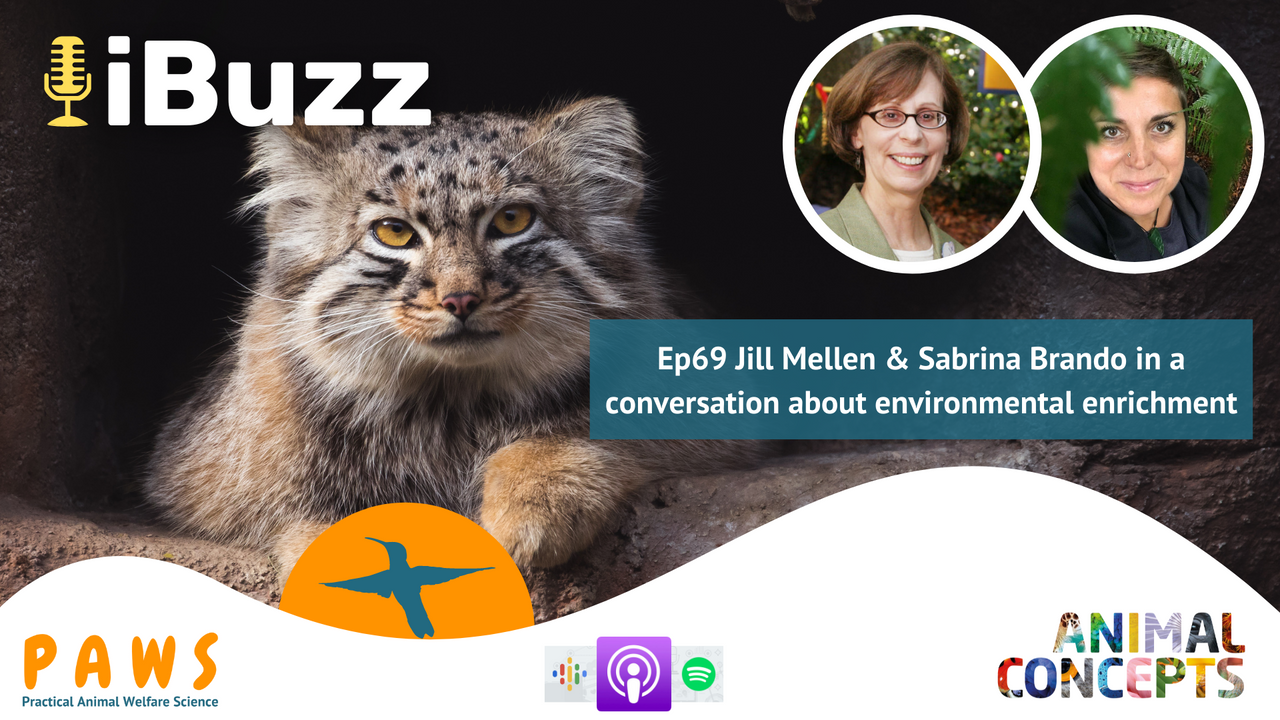
Dr Jill Mellen worked as the Education and Science Director at Disney’s Animal Kingdom and while now retired from this position, she is still very active in all kinds of projects! She has worked in the zoo and aquatic field for over three decades, with expertise in animal welfare. As such, in 2021, Jill received a lifetime achievement award for her work in animal welfare from the Association of Zoos and Aquariums.
Jill shares with us that beyond having a dog, her family had no interest in animals. Instead, Jill was inspired by her neighbours Velma and Karen who owned a horse. She went on to university to study for a BSc in Biology then an MSc in Animal Behaviour. Whilst studying, she acquired a job at Miller Park Zoo, Bloomington, Illinois where she worked with children and farm animals. This sparked her passion for zoo-based careers. Progressing from there, after her MSc Jill was hired to participate in environmental engineering and to train and supervise undergraduates at Oregon Zoo...
A Terminolopinion - blog by Wendy Las van Bennkom

The C-word and the D-word are very loaded in the dog world. Correction and Dominance. We are not allowed to use these terms anymore. I really wonder why not? It will become clearer if we do not avoid existing terms. Correction and Dominance exist. Throughout nature correction is real. And certainly, within a group of animals, there is Dominance. Yet we should not talk about it anymore. I absolutely do understand where this is coming from. Decades ago, it was normal to train dogs using punishment. Reinforcing was for wimps and old ladies. The dog training world was dominated (oops) by men and tough dogs. We taught our dogs behaviours such as heelwork by pulling the choke chain when he was not walking properly. We didn't know any better, coercion was normal. Luckily at a certain point, we gradually switched to a more respectful and animal-friendly method in working with animals. However, in the world of dog training, this method is still not accepted widely. In addition, we saw more and ...
Ep68 Tim Sullivan on the yin and yang of animal training, crystal okapis, and a career benefitting animals

Having a background in marine mammal training, Tim Sullivan reflects on the impact his different mentors and the thorough coaching that he received has had on his career in caring for marine mammals. Tim reflects on his experience and discusses how the practice of animal training has changed over the years and whether it is logical to ask animals to carry out behaviours that do not come naturally to them.
Tim is a co-founder of the Animal Behaviour Management Alliance and he explains how the organisation got started alongside the benefits it has for collaborative working when training animals. Tim also shares anecdotes on how he has found exposing animals to change early on can help build up their resilience and reduce stress when variations in their routine may be unavoidable. Having a lot of experience in animal training, Tim shares the value of being proactive in animal behaviour management to avoid problematic behaviours, such as stereotypies, from occurring.
Listen on your favou...
Ep67 Jay Pratte in remembrance of Else Poulsen, positive reinforcement training and Borscht the bear

This podcast is dedicated to Else Poulsen (1955 to 2016)
“Bears just do things for Bear reasons”
Jay Pratte is the Director of Animal Care, Conservation and Education at the Utica Zoo in the state of New York, USA.
Jay shares with us how his interest in animal behaviour initiated in Waterton Park whilst on a high school camping trip. While exploring the environment, Jay walked upon a doe. He approached her slowly with grass, observing her body language and adjusting himself to reduce the chance of her running. Although his father found it confusing, Jay thought this way of behaving was normal and thus carried it with him with his training.
Jays’ family expected him to be a lawyer due to his high grades. Consequently, he studied environmental law at Alberta University. He explained that by chance a friend told him about big cats which were housed outside the city in a roadside zoo, whereby Jay proceeded to volunteer there, shortly followed by employment. During his employment, he fu...

